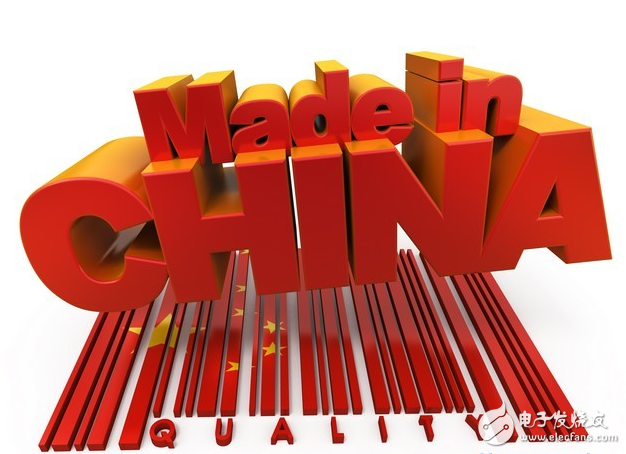In the eyes of foreigners, the impression that the Chinese market has brought to people for a long time is like a “big factory†that produces and processes products for global companies. Various products labelled “Made in China†go from here to overseas markets. There is hardly anything with independent creativity and leadership.
But today, this situation is beginning to change. Colin Light, a partner at PricewaterhouseCoopers, said: “Traditionally, Chinese companies are often fast-tracking followers. However, we are now beginning to see real innovation.â€
Huawei, Lenovo, Tencent, and China's own technology companies are increasingly challenging leaders in the global market, leading the way in telecommunications equipment, mobile devices and online services, and pointing the way for their respective industries.
Regardless of domestic and foreign, many company executives believe that China's technology industry is about to reach a "tipping point." The accumulation of professional knowledge, the continuous growth of the talent team, and the growing financial strength, these factors have gradually brought together, making the global technology industry face a huge impact. In a few years, perhaps the overall layout and appearance of the technology industry will become "unrecognizable."
The growing R&D investment is one of the “original motives†driving the rise of China's technology industry. According to a research report released by the Battelle Memorial InsTItute in December last year, China's R&D spending this year is likely to reach 284 billion US dollars, an increase of 22% over 2012. During the same period, US R&D spending is expected to grow only 4% to $465 billion.
According to the research institute's prediction, China's R&D spending will surpass Europe by 2018; even by 2022, even the United States will fall behind.

Huawei: The telecom market is vying for the first time
In the telecom equipment market, Nokia and Alang are both "old-fashioned powerhouses". But in the past decade, these telecom equipment companies from Western countries have been surpassed by Huawei from China.
According to revenue, Huawei has become the world's second largest telecommunications equipment manufacturer, second only to the Swedish company Ericsson. As mentioned earlier, R&D plays a crucial role in Huawei's later acquisition. Over the past decade, Huawei’s R&D spending has jumped 14 times from $389 million in 2003 to $5.46 billion. Today, Huawei has a research and development center in Shanghai, employing more than 10,000 engineers, many of whom have degrees in computer science.
The footsteps of innovators are always quick, which is what innovation means to be innovative. Today, the global telecommunications market is facing a wave of 4G boom, and the entire mobile industry is deploying faster 4G networks. But for Huawei, the 4G network is no longer the target of this company. It has begun to work on the development of 5G network technology. It is expected that this network will be available around 2020.
In this situation, the view that Chinese companies will only "follow the trend" is quietly changing. In October last year, when Danish telecom operator TDC announced a $700 million agreement with Huawei to replace its Ericsson equipment with Huawei equipment, TDC CEO Carsten Dilling (Carsten Dilling) said that he chose Huawei not because of the lower price of its products, but because of its expertise. He added that in fact Huawei's equipment is "very expensive."
Lenovo: Global Smartphone
In the field of consumer products, few Chinese brands have successfully become household names in the global market, but Lenovo, which overtook HP as the world's largest PC maker last year, is creating a new miracle.
In the environment where consumers around the world are increasingly turning from feature phones to smartphones, the smartphone market is like a beautiful flower, waiting for the arrival of “Exploring the Flowerâ€, and Lenovo is one of them. This company has already Launched a progressive global smartphone market expansion plan. Since 2012, Lenovo has released smartphone products in several overseas markets, such as Indonesia, India and Russia. In the Indonesian market, the company's market share now exceeds 10%.
The bold "flower exploration" has made Lenovo a real test in this market: according to a report released by market research firm Gartner, in the third quarter of last year, Lenovo's global sales of smartphones ranked third, second only to Samsung and Apple.
Like Huawei, R&D investment is also a strong backing for Lenovo. At the end of December last year, Lenovo opened a new R&D and production center for smartphones and tablets in Wuhan. The company invested 800 million U.S. dollars to build a 200,000 square meter R&D production facility.
"Of course we want to be the leader in the smartphone market, but the road to the future is still very long." Lenovo CEO Yang Yuanqing said.
Tencent: Software expansion, I am a pioneer
In the hardware field, Chinese companies have made great progress. However, many Chinese hardware companies are also faced with the challenge of developing software and user interfaces that appeal to a global audience.
This situation is changing, and what makes it change is Tencent. At the end of 2010, Tencent launched its mobile communication service WeChat in the Chinese market; today, more than two years later, WeChat has dominated the China Mobile (microblogging) communication market. The number of monthly active users of WeChat has reached 272 million, and the Thai half comes from the Chinese market.
But Tencent’s ambition has not stopped there. Last year, Tencent invested 200 million US dollars to launch advertising marketing activities in overseas markets, which pushed WeChat to many overseas markets such as India, South Africa, Spain and Italy. Tencent said that the number of overseas downloads of WeChat applications has now exceeded 100 million.
Last year, Tencent’s share price nearly doubled, with a market capitalization of $123 billion, not far from the $139 billion of US social networking giant Facebook.
Tencent is not alone. According to Hong Kong's Reorient Financial Markets, Chinese technology stocks rose 42% overall over the past six months. During the same period, the S&P North American Technology Industry Index rose by only 18%.
Kinetic Led Ball is the modern led lights, very popular in the high-end led lighting market, which consist of sports and lightings, the ball can move up and downs by kinetic engine machine which control by dmx 512 together with the led lamps. The kinetic ledball achieve the kinetic sculpture and led light color changing,enrich people's visual sense in sports and colors.
Photo show of Kinetic LED Ball:


Kinetic Led Ball
Kinetic Led Ball,Dmx Led Lift Ball,Kinetic Sculpture Led Ball,Kinetic Balls
Shenzhen Iseeled Technology Co., Ltd. , https://www.iseeledlight.com
